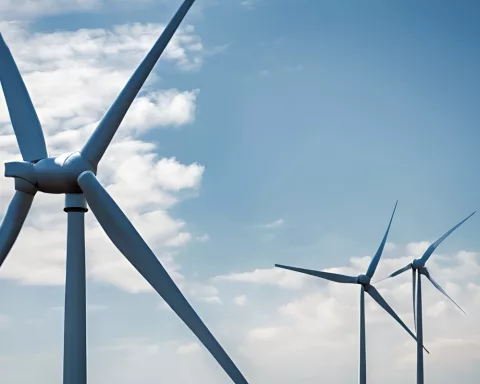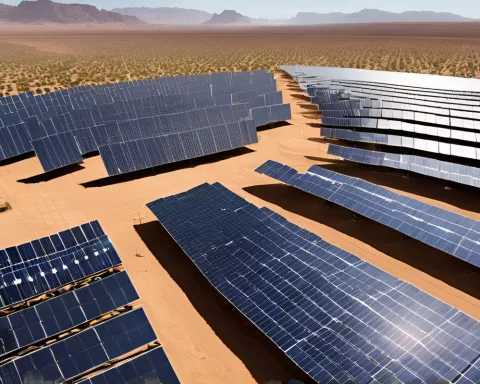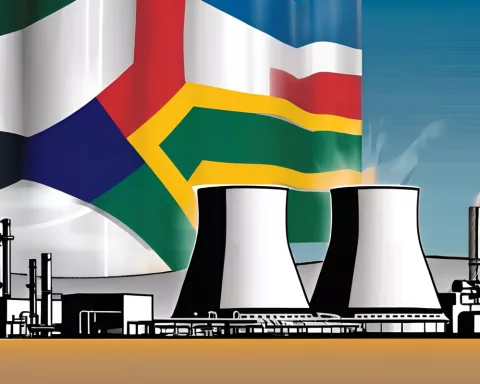Eskom, South Africa’s national power corporation, has achieved a significant improvement in energy availability, with an Energy Availability Factor (EAF) of 70.78%, ending nearly three years of struggle with power supply. This progress is credited to the initiatives implemented by the current Eskom board, including solidifying the management team, implementing performance-based incentive bonuses, and identifying critical power stations requiring immediate attention. Eskom’s dependence on Open Cycle Gas Turbines (OCGTs) has also lessened due to the improved performance of its coal fleet, resulting in lower diesel usage and greater efficiency. The contribution of businesses and renewable energy sources also signals a hopeful outlook for the future of South Africa’s energy sector.
Eskom, the national power corporation of South Africa, has achieved an Energy Availability Factor (EAF) of 70.78%, ending a nearly three-year long struggle with power supply. The improvement has been credited to the unwavering initiatives implemented since the appointment of the current Eskom board in October 2022, which includes solidifying the management team, implementing performance-based incentive bonuses, and identifying critical power stations requiring immediate attention. Furthermore, Eskom’s dependence on Open Cycle Gas Turbines (OCGTs) has lessened due to the improved performance of its coal fleet.
Eskom’s Significant Progress and Performance
In a momentous progress, Eskom, the national power corporation of South Africa, has recorded an Energy Availability Factor (EAF) of 70.78%, a first in nearly three years. Kgosientsho Ramokgopa, the Presidency Minister overseeing Electricity, announced this achievement, marking a substantial step towards actualizing the Energy Action Plan.
In the past few weeks, Eskom has successfully put a stop to load shedding, an intrusive electricity conservation method that has repeatedly plagued the utility provider. This remarkable reversal is credited to the unwavering initiatives implemented since the appointment of the current Eskom board in October 2022.
The improvement has been consistent and sustained. Comprehensive steps, such as solidifying the management team, implementing performance-based incentive bonuses, and identifying critical power stations requiring immediate attention, were put into action. These tactics, part of President Ramaphosa’s Energy Action Plan, introduced in July 2022, have proven successful.
Overcoming Challenges and Future Progress
During periods of heightened load shedding, the government appealed for understanding, contending that temporary discomfort would result in long-term advantages. This forecast now seems to be materializing.
As we stepped into 2024, Eskom achieved record levels of scheduled maintenance in three years. This intensive maintenance-driven recovery strategy has started bearing fruit. In an unparalleled step, 18% of the total power generation capacity was set aside for scheduled maintenance. These units are now returning to operation, strengthening the capacity further.
Simultaneously, Eskom’s dependence on Open Cycle Gas Turbines (OCGTs), which necessitate diesel usage, has lessened due to the improved performance of its coal fleet. This challenges the widely held belief that the enhancements were driven by diesel combustion. Reduced dependence on OCGTs has resulted in lower diesel usage, further optimizing efficiency.
The load factor of the OCGT has seen an impressive reduction, tumbling from 19.13% to a mere 6.8%. This revival is underpinned by the performance of coal-powered power stations, such as Kusile, among others.
Role of Businesses and Renewable Energy
The abrupt termination of load shedding left many astonished, with some attributing it to the 2024 election campaign. However, a deeper analysis uncovers a different story – the crucial contribution of businesses in addressing this issue.
The Business for South Africa (B4SA) group has announced that load shedding will be diminished to Stage 1 by the close of this year and completely eliminated by 2025. While this might seem ambitious, these estimates are based on the rising dependence on renewable energy, complemented by the role played by open-cycle gas turbines.
Exemplifying this positive shift, the substantial increase in rooftop solar installations last year, totaling approximately 2,600MW, deserves mention. Although the growth rate may have slightly decelerated, continued expansion in this sector is expected.
Eskom’s Financial Management and Future Outlook
Eskom’s diesel spending, which nearly reached R30 billion in 2023, is another influential element. It is, however, significant to mention that the diesel usage for the current year is lower in comparison to 2023 and 2024.
In conclusion, the recent advancements in South Africa’s power sector, primarily the reduction in load shedding and the increased EAF, validate the effectiveness of the strategies implemented by Eskom and the government. This progress, along with the growing contribution from renewable energy sources, forecasts a hopeful outlook for the future of South Africa’s energy sector.
1. What is Eskom?
Eskom is the national power corporation of South Africa.
2. What is Eskom’s Energy Availability Factor (EAF)?
Eskom’s Energy Availability Factor (EAF) is the percentage of power capacity that is available for use at any given time. Eskom has achieved an EAF of 70.78%, which is a significant improvement from previous years.
3. What initiatives did the current Eskom board implement to improve energy availability?
The current Eskom board implemented initiatives such as solidifying the management team, implementing performance-based incentive bonuses, and identifying critical power stations requiring immediate attention.
4. What is load shedding and how has Eskom addressed it?
Load shedding is an electricity conservation method that involves temporarily cutting power to certain areas to prevent a total blackout. Eskom has successfully put a stop to load shedding in recent weeks, which is credited to the initiatives implemented by the current Eskom board.
5. What role have businesses and renewable energy sources played in the improvement of South Africa’s energy sector?
Businesses have contributed significantly to the reduction of load shedding and the improvement of South Africa’s energy sector. The Business for South Africa (B4SA) group has announced plans to eliminate load shedding completely by 2025. Renewable energy sources, such as rooftop solar installations, have also played a crucial role in complementing the power supply.
6. What is the future outlook for South Africa’s energy sector?
The recent progress in South Africa’s power sector, along with the growing contribution from renewable energy sources, forecasts a hopeful outlook for the future of South Africa’s energy sector.












